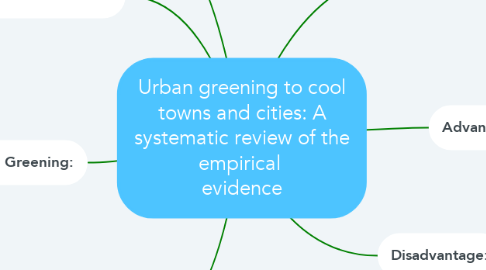Urban greening to cool towns and cities: A systematic review of the empirical evidence
by Kitchristopher Alcantara


1. Interpolation Method:
1.1. Kriging techniques
1.2. Comparing Spatial
1.3. OCK techniques
1.4. GIS spatial
2. Country Of France
3. Urban Greening:
3.1. Change that been predicted to have a range of consequences for Human health arising from the direct and indirect impacts of changes in temperature and precipitation
3.2. Increase of air temperature in problematic Urban areas
4. NDVI Data
4.1. studies following this approach found a negative correlation between vegetation
4.1.1. to assess the effects of different potential infrastructures rather than green cover per section, our review focuses on studies that measure air temperature in a specific greening type rather than an undescribed green or vegetation surface cover

